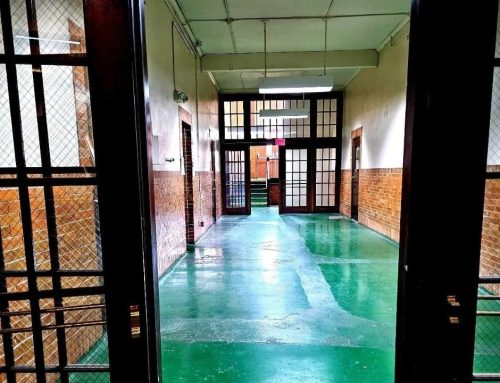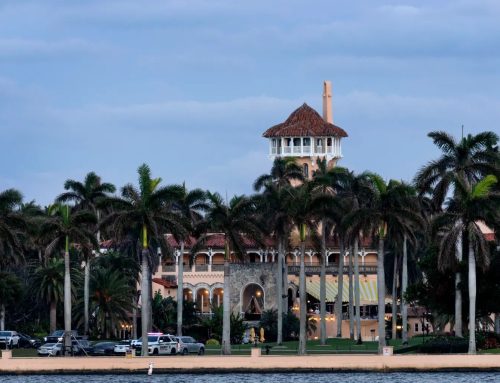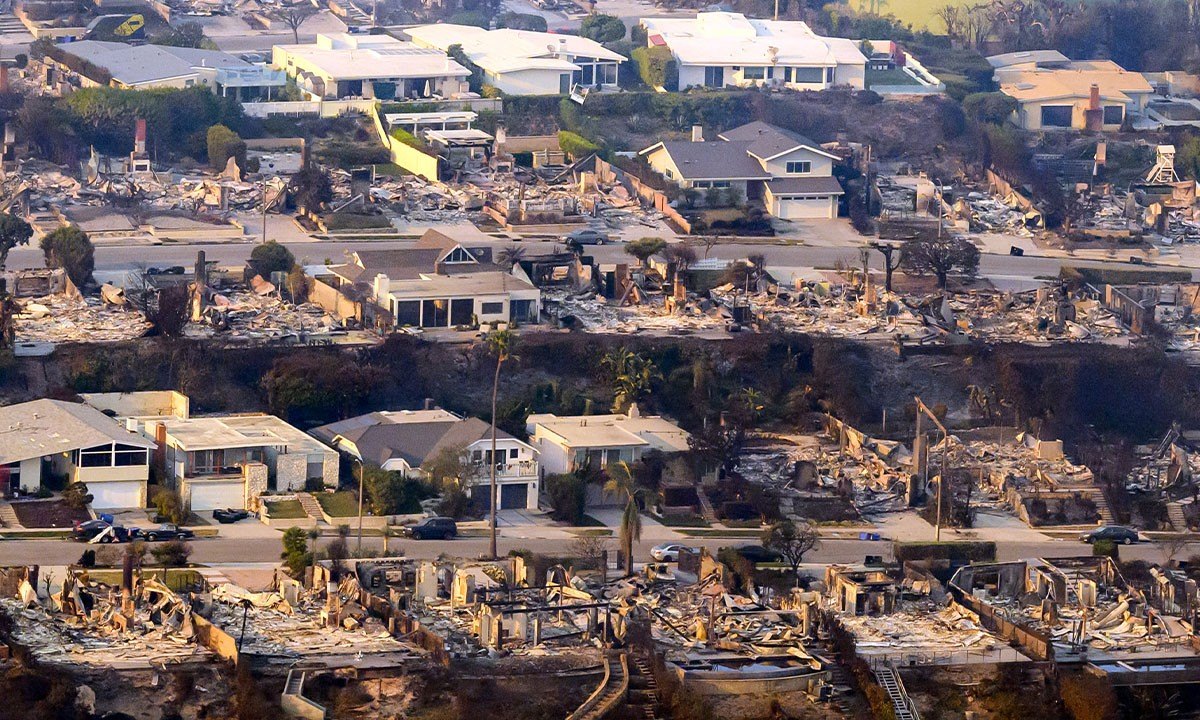
JOSH EDELSON/AFP via Getty Images
The Los Angeles fires are shaping up to be some of the most destructive and expensive in the country’s history.
Total damage and loss estimates are between $250 billion and $275 billion, according to AccuWeather. Meanwhile, Cal Fire says at least 24 people have been killed, more than 40,588 acres burned, and 12,300 structures destroyed.
But some homes—despite all the others around them burning to ashes—survived miraculously unscathed.
Shocking aerial photos of the Malibu coastline revealed one mansion that escaped the fire’s wrath despite all others being burned to the ground on either side of it.
The three-story contemporary mansion belongs to Waste Management CEO David Steiner.
While his white mansion remains standing with no visible damage, the homes on both sides and along the coastline were nothing but charred, smoking ruins.
“I don’t use the word ‘miracle,’” Steiner told ABC13 Eyewitness News of his home’s survival. He bought the house in 2015 and doesn’t live in it full time.
“I say that it’s great architecture, brave firefighters, and maybe a little dash of miracle,” he added, speculating that the home’s “concrete design” helped it survive.
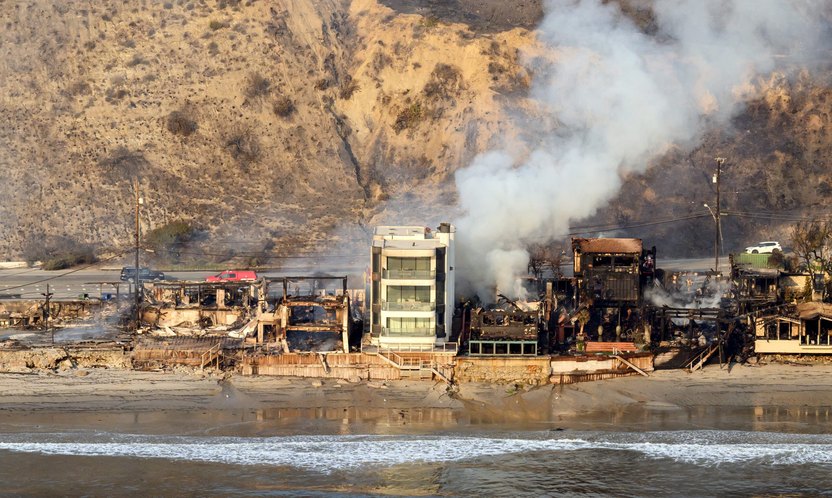
JOSH EDELSON/AFP via Getty Images
Why do some homes survive massive fires?
“The survival of homes, while others around them were destroyed, can actually be attributed to a mix of careful planning, structural integrity, environmental factors, and sheer effort,” says fire safety expert Daniel Vasilevski, of Bright Force Electrical.
Firstly, homes that survive could just be made better, and with fire-resistant materials such as stucco, metal, and stone, and roofs made of clay or metal. Windows could be double-glazed, keeping them from shattering from heat and not allowing flames to enter the home. Sealed gaps in walls will also stop smoke and fire from entering the home where it can spread and do more damage.
“The choice of materials isn’t just an aesthetic or cost decision,” says Vasilevski. “It directly impacts a structure’s ability to withstand extreme fire conditions as well.”
“The major factors affecting whether a home will ignite in a firestorm has to do with the materials it is constructed of, its state of repair, and the management of surrounding decorative vegetation,” adds Wayne Whitney, fire investigator with Fire Scene Analysis.
“The homes featured in the provided internet stories looked to have noncombustible roofs and exterior walls with plenty of ‘defensible’ space in their immediate surroundings.”
One jaw-dropping example of this is Tom Hanks‘ cliffside mansion. As the fire raced up his Pacific Palisades bluff, scorching the homes above and below it, Hanks’ $26 million home, which he reportedly purchased with wife Rita Wilson in 2010, appears untouched by the flames or smoke.
“Tom Hanks’ Malibu mansion is a great example of how fire-resistant construction helps in fire-prone areas,” says Vasilevski. “Reports suggest the home features reinforced concrete and a fire-resistant roof, both of which are highly effective against embers and heat.”
Aerial photos essentially show a “moat” around Hanks’ home without much vegetation, which is fuel to a fire.
“Restricting foliage away from the structure is another key to protecting against the spread of fire. The photo of Hanks’ house shows this landscaping tip, although the one tree to the right could be a problem,” says fire safety expert Jessica Lauren, of Fire Damaged House Aid.
As for Steiner’s oceanside mansion, its structural design also played a large role in the home coming out unscathed.
“David Steiner’s Malibu mansion includes pilings driven 50 feet into the bedrock,” explains Vasilevski. “While these are primarily meant to provide stability during seismic activity, they make homes more resistant to wildfires as well. A deeply anchored foundation resists heat-induced shifting or cracking in the ground, which could otherwise weaken the structure and expose it to flames or embers.”
Fires can loosen the ground under a structure to the point where gaps and cracks are formed in the home, allowing in embers. A landslide-resistant building is much less likely to have this happen.
“Saturday Night Live” alum Bill Hader‘s Pacific Palisades mansion also miraculously survived. Aerial photos show a stunning scene of homes razed by fire on all sides, while the “Barry” actor’s white, two-story, contemporary home, with a guesthouse or garage to the side with solar panels on the roof, is eerily intact.
Environmental factors
“Wildfires are influenced by factors like wind patterns, topography, and available fuel,” says Vasilevski. “In the Palisades fire, certain homes may have been spared because of these environmental factors. Hills and canyons can funnel fire differently, meaning some homes might sit in areas less affected by radiant heat or direct flames.”
Alisa Wolfson, a journalist living in the Pacific Palisades with her husband and two daughters, aged 7 and 10, told Yahoo News that her home was destroyed. She and her family are currently living in a hotel.
Yet she was shocked to see that two homes across the street from her were not only intact but even their hedges remained green.
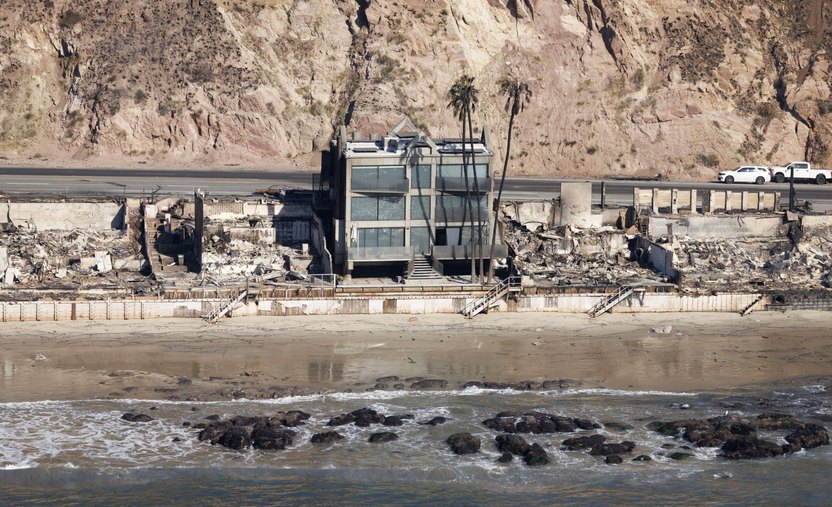
David Hume Kennerly/Getty Images
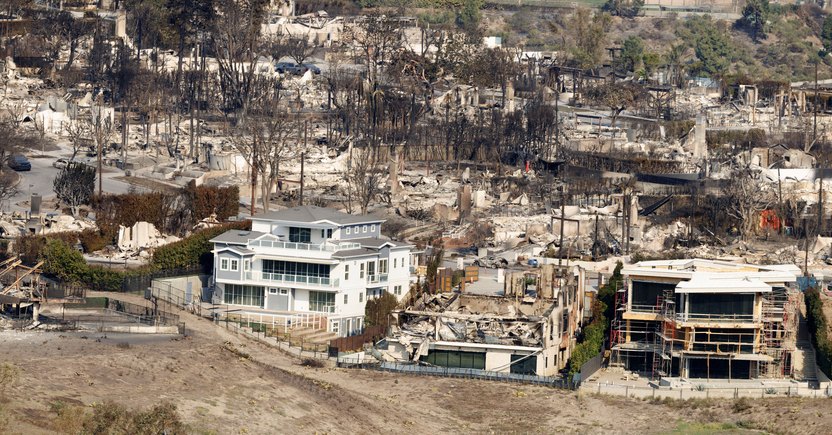
David Hume Kennerly/Getty Images
The Expert Institute’s fire origins investigator John Miller explains: “Some plants and trees burn more vigorously than others.”
As for why one side of the street can be decimated while the other remains unscathed, he adds, “The wind may have shifted while a structure was engulfed next door, which directed heat and flames in a different direction and away from the structure that was not burned.”
Some people get lucky
Then there’s the one thing no one can control: luck.
A change in wind, natural barriers such as rocks, or embers just happening to not land on a house can all spare one property when others around it don’t get so lucky.
“Luck does play a factor,” says Lauren. “My home in a different geographic location farther south was routinely spared when fierce Santa Anas sent embers flying into other adjacent and nearby neighborhoods.
“Luck. No other reason.”


